The world rice market continues to plummet as the Rice Exporters Association of India (REA) recently called for the reopening of broken rice exports. According to the Vietnam Food Association (VFA), our 5% standard rice is only at 394 USD/ton; 25% broken rice is at 369 USD/ton; 100% broken rice is at 310 USD/ton.
World rice market continues to plummet...
The Rice Exporters Association (REA) has urged the government to lift the ban on exports of 100% broken rice after inventories soared to nearly nine times the target. If approved, the move could help release India’s large rice supply to the global market.
Data from the Food Corporation of India (FCI) shows that as of February 1, total rice stocks (including unmilled paddy) had reached 67.6 million tonnes – nearly nine times higher than the Indian government’s target of only 7.6 million tonnes. The large amount of broken rice in stock has prompted the Rice Exporters Association of India (REA) to request the government to quickly lift the ban on exports of this type of rice to reduce warehouse pressure.
Faced with this move, countries simultaneously reduced rice prices compared to last week; specifically, Thai rice decreased by 4 USD to 414 USD/ton - the highest in Asia, Indian rice decreased by 5 USD to 408 USD/ton and Pakistani rice decreased by 7 USD to 395 USD/ton.
Currently, Vietnam's rice export prices have also dropped sharply, remaining at the lowest level among the four major exporting countries (India, Thailand, Pakistan and Vietnam). According to the Vietnam Food Association (VFA), 5% standard rice today (February 21) is at 394 USD/ton; 25% broken rice is at 369 USD/ton; 100% broken rice is at 310 USD/ton. This is the lowest level since the end of August 2021 and down from 397 USD/ton last week.

Rice prices fell due to abundant supply while demand remained weak. The winter-spring harvest has begun and is expected to peak next month.
Rice prices today, February 21, 2025, in the Mekong Delta region are still quiet. According to the update from the Department of Agriculture and Rural Development of An Giang province, currently IR 504 raw rice fluctuates at 7,900 - 8,000 VND/kg; OM 380 raw rice fluctuates at 7,550 - 7,700 VND/kg; 5451 raw rice fluctuates at 8,500 - 8,600 VND/kg; OM 380 finished rice fluctuates at 8,800 - 9,000 VND/kg; IR 504 finished rice fluctuates at 9,500 - 9,700 VND/kg.
Similar to fresh rice, according to the update from the Department of Agriculture and Rural Development of An Giang province, the current price of OM 5451 rice decreased by 100 VND, fluctuating at 5,800 - 6,000 VND/kg; OM 18 rice decreased by 100 VND, fluctuating at 6,400 - 6,500 VND/kg; Dai Thom 8 rice fluctuated at 6,400 - 6,600 VND; IR 50404 rice fluctuated at 5,400 - 5,600 VND/kg; OM 380 rice was at 6,600 - 6,700 VND/kg; Nhat rice was at 7,800 - 8,000 VND/kg; Nang Hoa 9 was at 9,200 VND/kg.
In many localities today, the quantity is low, rice trading continues to be slow.
Will rice prices recover soon?
According to the General Department of Customs, Vietnam exported a total of 547,408 tons of rice in January with a value of 324.89 million USD, up 10.6% in volume but down 5.6% in value compared to the same period last year due to a sharp drop in prices.
The average export rice price in January reached 594 USD/ton, down 4.9% compared to December 2024 and down 14.6% (102 USD/ton) compared to January 2024.
According to the US Department of Agriculture (USDA), the total global rice supply in the 2024-2025 crop year is forecast to reach a record 712.15 million tons, down 215,000 tons from the previous forecast but 9.2 million tons higher than the previous year, marking the second consecutive year of growth.
Global rice consumption in 2024-25 is also forecast to reach a record 530.5 million tonnes, 284,000 tonnes higher than the previous forecast and up 7 million tonnes from 2023-24.
With this forecast, the global rice supply-demand balance will shift from deficit to surplus of about more than 2 million tons in the current crop year.
According to USDA, in 2025, exports in Argentina, Brazil, the European Union (EU), India, Paraguay, Russia, South Korea, and Uruguay are forecast to increase compared to 2024 and offset declines from Myanmar, Cambodia, Pakistan, Taiwan, Thailand, Türkiye, the United States, and Vietnam.
India is expected to remain the world's largest rice exporter with a volume of 22.5 million tonnes, up 4.7 million tonnes from last year. India's rice exports are expected to recover after export restrictions are lifted.
In contrast, rice exports from the next largest suppliers, Thailand, Vietnam and Pakistan, are forecast to fall by 2.4 million tonnes, 1.5 million tonnes and 1.2 million tonnes, respectively. According to the USDA, rice exports from Thailand and Vietnam will both fall to 7.5 million tonnes this year, while Pakistan will reach 5.3 million tonnes.
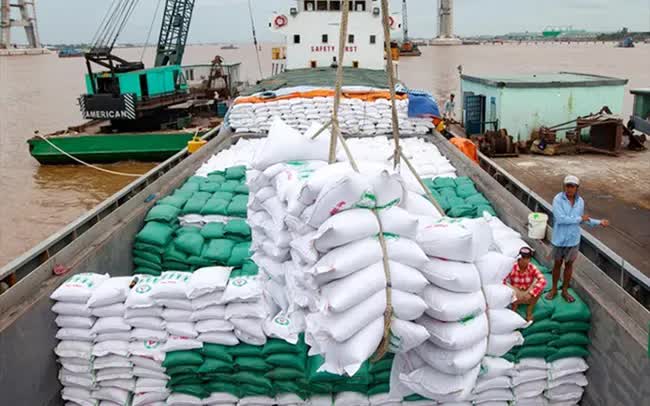
Mr. Nguyen Ngoc Quynh - Deputy General Director of the Vietnam Commodity Exchange (MXV) commented that the pressure to reduce prices will still cover the rice market in the coming months, especially in the context of high harvest output of major exporting countries such as India and Thailand.
According to Mr. Quynh, not only has supply skyrocketed, but import demand has also weakened significantly. When the rice shortage caused by the Indian ban ended, many traditional Vietnamese customers delayed their purchases in the expectation that prices would fall further.
Currently, Vietnam's rice export price is at the lowest level among the world's leading exporting countries. However, according to MXV, Vietnamese rice has long held an important position on the global export map, with its own market segment and stable demand. When major customers return, Vietnam's rice price is likely to recover strongly.
Moreover, recently, the trade retaliation moves between the US and China are potentially spreading globally and raising concerns about food security. If geopolitical tensions do not cool down, and domestic production protection policies increase by creating trade and technical barriers, it is not impossible that world rice prices will return to 500 USD/ton.
The solution to escape the current situation is to step up trade promotion and diversify markets for rice exports. Along with markets such as the United States and China, businesses also need to pay attention to the European Union, Japan and South Korea markets. Businesses need to focus not only on the high-end rice segment, but also expand to new potential markets such as the Middle East.
The US Department of Agriculture (USDA) forecasts that Vietnam's rice exports in 2025 will reach only 7.5 million tons, down from a record of more than 9 million tons last year. Vietnam's rice exports this year will face challenges due to a possible increase in supply from India and efforts by Indonesia to cut imports. However, rice exports to China are forecast to improve.
Vietnam is about to enter the winter-spring harvest season - the crop with the largest output of the year. Favorable weather conditions mean output is forecast to be abundant, causing many importers to temporarily hold off on purchasing goods in order to wait for lower prices.
The rice market is currently facing difficulties but rice prices seem to have bottomed out and are unlikely to fall further in the near future as importers step up purchases and prices are likely to improve.
Source: https://danviet.vn/dong-thai-moi-tu-an-do-gia-gao-the-gioi-tiep-tuc-lao-doc-gao-viet-xuong-moc-moi-20250221161413024.htm






![[Photo] Prime Minister Pham Minh Chinh launched a peak emulation campaign to achieve achievements in celebration of the 14th National Party Congress](https://vphoto.vietnam.vn/thumb/1200x675/vietnam/resource/IMAGE/2025/10/5/8869ec5cdbc740f58fbf2ae73f065076)

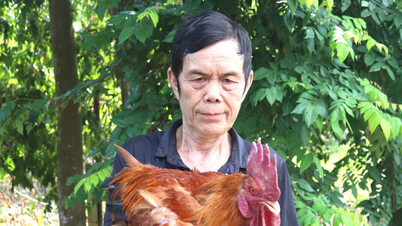

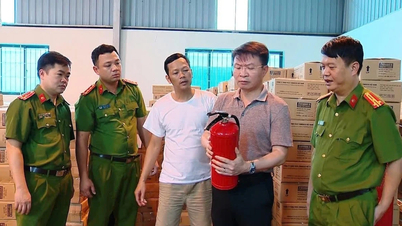















![[Photo] Bustling Mid-Autumn Festival at the Museum of Ethnology](https://vphoto.vietnam.vn/thumb/1200x675/vietnam/resource/IMAGE/2025/10/4/da8d5927734d4ca58e3eced14bc435a3)


























![[VIDEO] Summary of Petrovietnam's 50th Anniversary Ceremony](https://vphoto.vietnam.vn/thumb/402x226/vietnam/resource/IMAGE/2025/10/4/abe133bdb8114793a16d4fe3e5bd0f12)

![[VIDEO] GENERAL SECRETARY TO LAM AWARDS PETROVIETNAM 8 GOLDEN WORDS: "PIONEER - EXCELLENT - SUSTAINABLE - GLOBAL"](https://vphoto.vietnam.vn/thumb/402x226/vietnam/resource/IMAGE/2025/7/23/c2fdb48863e846cfa9fb8e6ea9cf44e7)



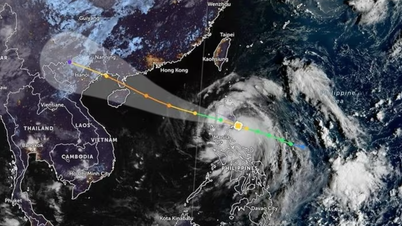
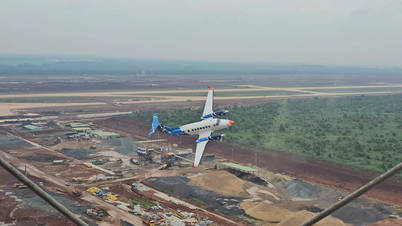









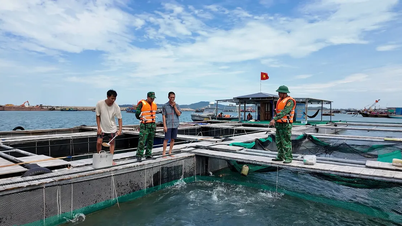









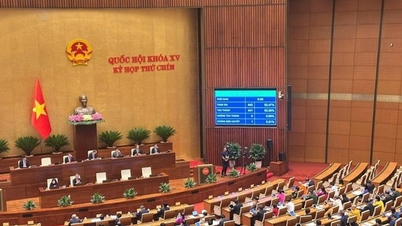










Comment (0)